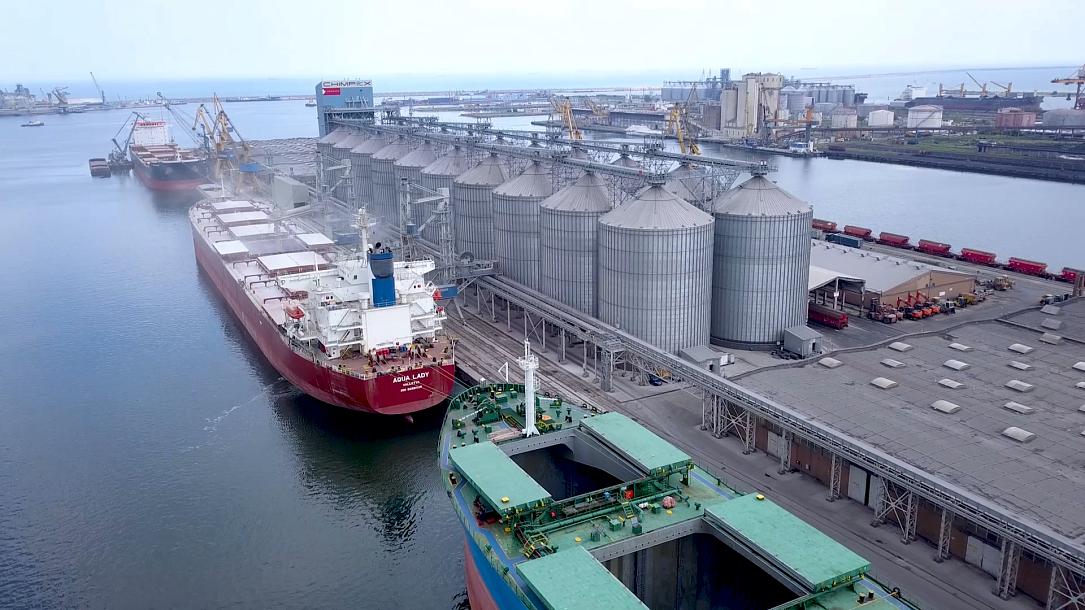Driven away by the Russian blockade, Ukrainian ships cause congestion in Romania’s port of Constanța



The Russian blockade has forced Ukraine, a major global exporter of agricultural products, to move part of its freight traffic through Romania’s port of Constanța, causing congestion and delays. However, the port’s administration says the situation is still manageable after implementing new hires and longer working hours.
Russia has blockaded Ukrainian ports since February 24, the start of its invasion of the neighboring country, making it impossible for Ukraine to ship out or receive goods. Among those goods meant for export is a surplus of 12 million tons of agricultural products.
Silos in Ukraine are stocked to the brim as a result, meaning that there will not be enough room for the new harvest. Experts fear an impending food crisis in parts of the world, like Africa, that depend on Ukrainian wheat, fertilizer, or vegetable oils. Odesa, Ukraine’s major Black Sea port, has been repeatedly targeted by Russian missile strikes in addition to the ongoing blockade.
“For the first time in decades and decades, in Odesa, there is no regular movement of the merchant fleet, there is no routine port work. This has probably never happened in Odesa since World War Two,” said Ukrainian President Volodymyr Zelensky quoted by Reuters. He added that without Ukraine’s major agricultural exports, most importantly maize and wheat, dozens of countries will be faced with starvation.
U.N. Secretary-General Antonio Guterres, Canadian Prime Minister Justin Trudeau, and European Council President Charles Michel are among those who highlighted the severity of Ukraine’s exports crisis, which they did during their visits to Kyiv.
To get around Russian warships but still make deliveries of essential goods, Ukrainian cargo ships have been using Constanța, Romania’s largest port. However, the increased activity has had Romanian port authorities struggle to keep up and prevent blockages.
On May 4, 39 ships were docked in the port of Constanța, loading or unloading their shipments. Around 56 others were anchored outside the bounds of the port, waiting to enter. Most of them were carrying grain or equipment used in the energy sector.
Florin Goidea, general director of the Constanța Maritime Port Administration, acknowledged delays caused by the port’s congestion but argued that the authorities have made efforts to streamline the traffic of goods. New hires increased the number of port personnel and longer working hours had to be imposed to handle the new workload.
“There were around 9,000 containers that would normally be processed through Ukrainian ports, which had to be shipped [from Constanța],” Goidea said. “The problem is that you have to ship the goods out of the port as fast as possible so as to not create blockages. The port is not for storage,” he added. “There is a congestion when it comes to general goods in the Constanța – Agigea port, but there is no blockage.”
There are also other difficulties when it comes to Romania taking over the shipping and receiving of goods for Ukraine. As spokesmen for the port point out, EU customs regulations are different from those of non-EU countries like Ukraine or Moldova. This adds to delays in sending off shipments, which means that new goods cannot be received.
The situation in the port of Constanta has also received the attention of Romania’s government. Ionuț Stroe, a spokesman for the governing National Liberal Party (PNL), denied that the port was facing extraordinary blockages. “It should not bother anyone that the port is facing congestions,” he said, adding that Romanian cargo operators and the port authority have to adapt to the situation.
by Radu Dumitrescu, journalist
radu@romania-insider.com
(Photo source: Constanta Port Facebook page)